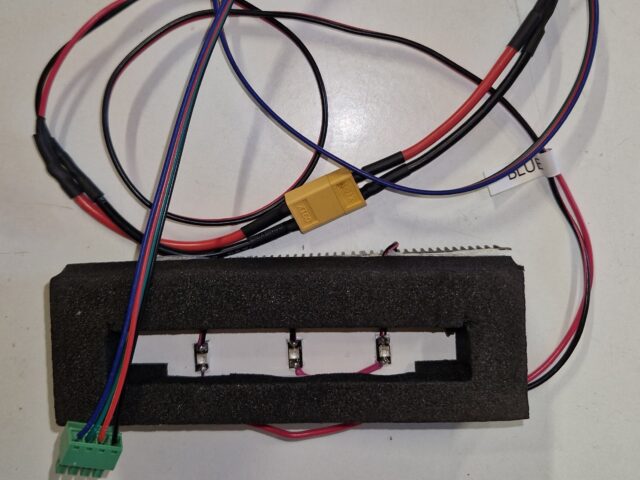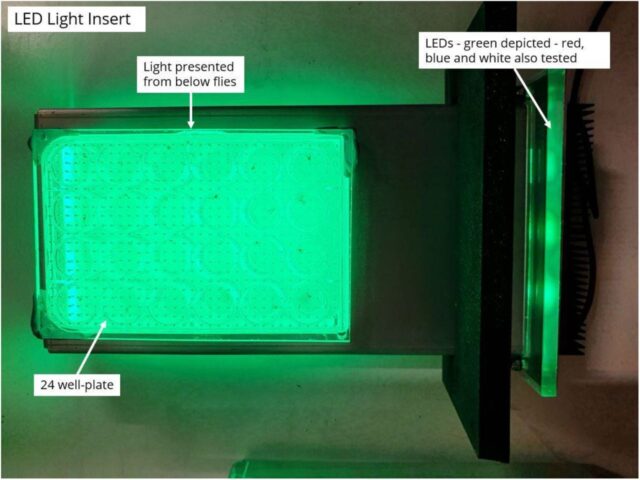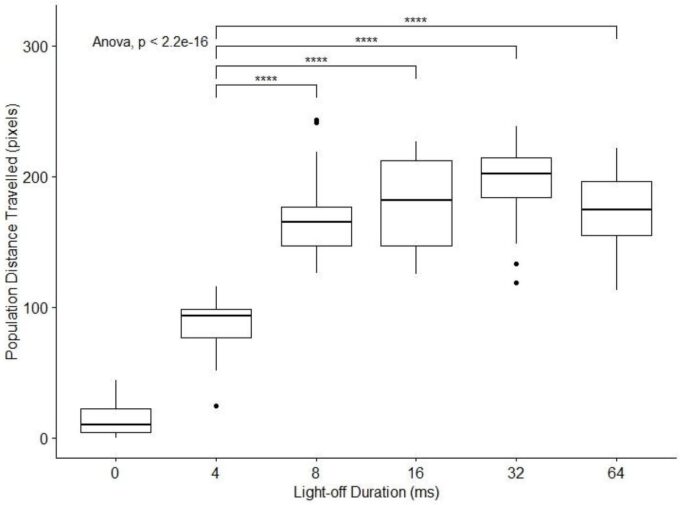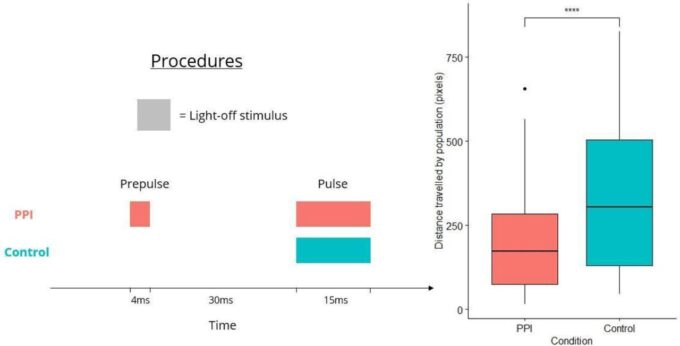Startle responses are innate motor reflexes to sudden changes in the environment - classified as a defensive response. Abnormal startle reflexes are seen across many psychiatric disorders. There are two well studied characteristics of startle response: pre-pulse inhibition and habituation.
Startle habituation is the decrease in responsiveness following repeated exposure of the same stimulus. It is a simple form of non-associative learning and can be a measure of sensory filtering.
Pre-pulse inhibition (PPI) is a measure of sensorimotor gating, in which an initial, non-startling stimulus, reduces a startle response to a stronger stimulus.
Startle-induced jump and flight response in Drosophila is a well established model for studying the genetic background of these behaviours. Both habituation and PPI with a light-off stimulus have been seen with adult Drosophila.
Experimental setup
Adult Drosophila are placed individually in each well of a 6, 12, 24, 48, or 96 well plate. The multi-well plate is then placed onto the light stimulation plate and inserted into the chamber of the Zantiks MWP system.
A 530nm green LED light at approximately 100 lux is used as the stimulus. The Light Stimulation Plate LEDs (LSP LEDs) clip onto the end of the light stimulation plate and allows for evenly distributed light across the well plate.
To reduce the brightness of the LSP LEDs, it is plugged into CN7 or CN8 with the use of a LED adapter cable rather than the standard LSP LEDs Z2 loop cabling. This turns the light down to 530nm and helps to avoid oversaturating the Drosophila's eyes with the bright light.
See the Commands for LSP LEDs plugged into CN7 and CN8 section of the Light stimulation plate demo MWP page for details of script commands.


Experimental procedure
The flies should be given an acclimation period to adjust to their new environment.
Startle trials
A series of short (15 ms) light-off pulses with long intertrial intervals between the pulses (~1 min) can be given to induce a startle response.
Habituation trials
Startle response to light-off pulses decrease with the increasing number of trials. A series of light-off pulses are given with a small intertrial interval (~1 second) between each pulse.
Pre-pulse inhibition trials
A short pulse preceding the startle stimulus can reduce the response to the startle stimulus. A light-off "pre-pulse" of 4ms is given 30ms prior to the 15ms light-off pulse.
Results / data output
The distance travelled and mean pixel change data of every startle response is recorded for 1s after the start of each light-off pulse. This can be used as a measure of the Drosophila's flight response when interpreting population data.
Flight responses can be scored as either a 'non-startle', 0 or a 'startle', 1 and flight frequencies can be determined for the stimulus types (i.e., pre-pulse, pulse, and PPI) - ranging from 1 calculated across all trials (10 jumps in 10 trials) and 0 across all trials (0 jumps in 10 trials).
A PPI Index is calculated as a percentage reduction of the startle/flight response to the pulse stimulus following a pre-pulse:
𝑷𝑷𝑰 𝑰𝒏𝒅𝒆𝒙 (%) = 𝟏𝟎𝟎 − ((𝑷𝑷𝑰 𝒔𝒄𝒐𝒓𝒆/𝑷𝒖𝒍𝒔𝒆 𝒔𝒄𝒐𝒓𝒆) × 𝟏𝟎𝟎 )
PPI Index (%) = 100 % = Complete Pre-Pulse Inhibition
PPI Index (%) = 0 % = No Pre-Pulse Inhibition
“PPI score” and “P score” values being flight frequency to PPI stimuli and flight frequency to Pulse stimuli.


Adult Drosophila startling to a light pulse in a 24 well plate with agar.
High speed capture of an Adult Drosophila startle response
Protocol scripts downloads
There are 4 scripts for a lights off startle response assays for adult Drosophila: a simple light-off startle script with only a 15 ms stimulus, a light-off startle script with 7 different light-off durations, a startle habituation script, and a pre-pulse inhibition script.
- simple_light_off_startle.zs
- Drosophila are exposed to a 15ms light-off stimulus
- light_off_startle_varying_duration.zs
- Drosophila are exposed to a light off stimuli of varying duration including 0, 2, 4, 8, 16, 32 and 64 ms
- startle_habituation.zs
- Drosophila are exposed to repeated light-off stimuli at 1 second intervals
- PPI.zs
- Drosophila are exposed to a pre-pulse light off stimuli before a full light off stimuli
Asset
You will need to upload the appropriate asset into the Asset directory on your Zantiks Control Console and ensure the correct asset name is in the LOAD(ZONES,"name_of_asset") command in the script.
See the Calibrating your Zantiks unit page and Asset building in the MWP unit page for details on how to create assets customised to your system.



